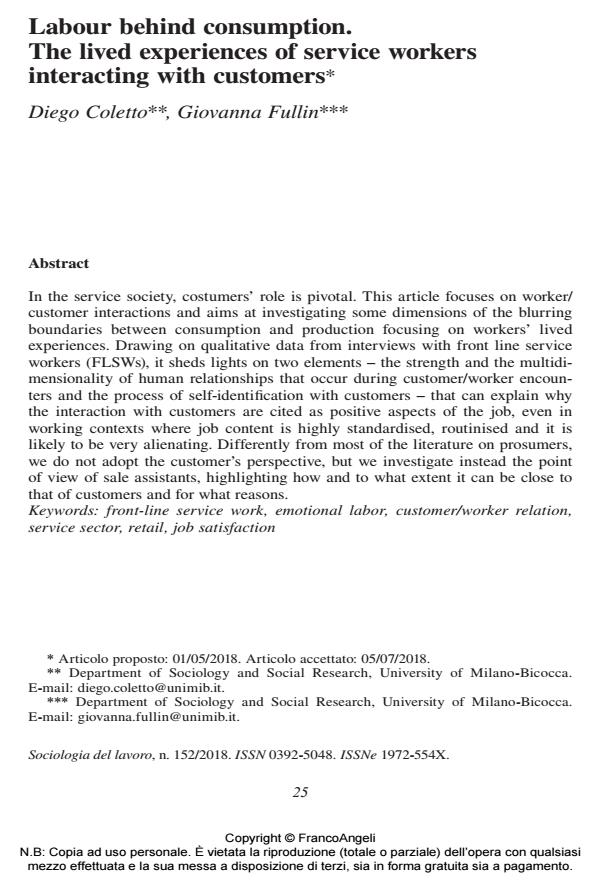Labour behind consumption. The lived experiences of service workers interacting with customers
Journal title SOCIOLOGIA DEL LAVORO
Author/s Diego Coletto, Giovanna Fullin
Publishing Year 2018 Issue 2018/152
Language English Pages 18 P. 25-42 File size 111 KB
DOI 10.3280/SL2018-152002
DOI is like a bar code for intellectual property: to have more infomation
click here
Below, you can see the article first page
If you want to buy this article in PDF format, you can do it, following the instructions to buy download credits

FrancoAngeli is member of Publishers International Linking Association, Inc (PILA), a not-for-profit association which run the CrossRef service enabling links to and from online scholarly content.
In the service society, costumers’ role is pivotal. This article focuses on worker/ customer interactions and aims at investigating some dimensions of the blurring boundaries between consumption and production focusing on workers’ lived experiences. Drawing on qualitative data from interviews with front line service workers (FLSWs), it sheds lights on two elements - the strength and the multidi-mensionality of human relationships that occur during customer/worker encoun¬ters and the process of self-identification with customers - that can explain why the interaction with customers are cited as positive aspects of the job, even in working contexts where job content is highly standardised, routinised and it is likely to be very alienating. Differently from most of the literature on prosumers, we do not adopt the customer’s perspective, but we investigate instead the point of view of sale assistants, highlighting how and to what extent it can be close to that of customers and for what reasons.
Keywords: Front-line service work, emotional labor, customer/worker relation, service sector, retail, job satisfaction
Diego Coletto, Giovanna Fullin, Labour behind consumption. The lived experiences of service workers interacting with customers in "SOCIOLOGIA DEL LAVORO " 152/2018, pp 25-42, DOI: 10.3280/SL2018-152002